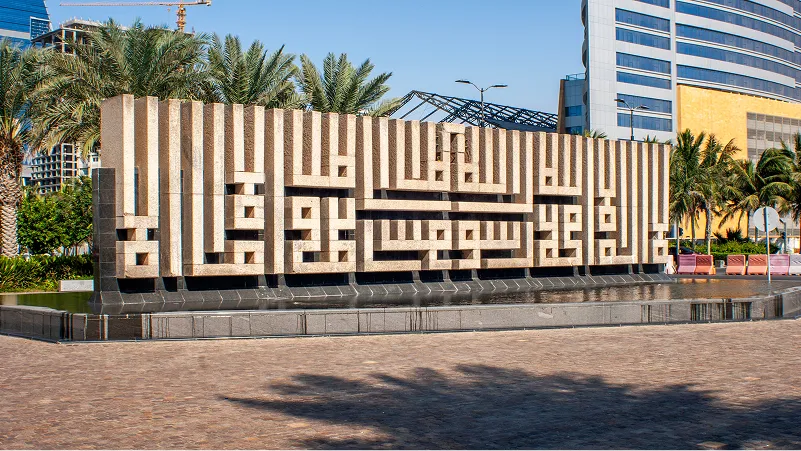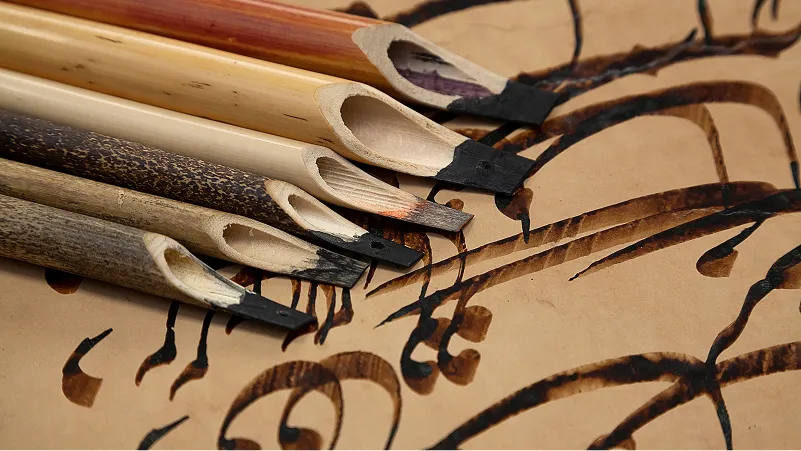.webp)
Why does it matter so much here? Partly, it’s a legacy thing – calligraphy has played a central role in Islamic art, where the written word itself is revered. But in the UAE, that sense of respect gets a distinctly modern twist. For all the speed and gloss of Dubai and Abu Dhabi, there’s a genuine fondness for old-school skill – especially when it looks this sharp. That’s why you’ll spot bold Thuluth script on a high-rise, or Kufi letters running along a pair of limited-edition sneakers at a Ras Al Khaimah shop.

Tucked in Sharjah’s Heritage Area, the Sharjah Calligraphy Museum is a quiet corner where old skills are given room to breathe. It’s the only museum in the Arab world devoted entirely to calligraphy, though plenty of lifelong residents will admit they’ve ‘been meaning to visit’ for years. Inside, the rooms are lined with Qur’anic texts, contemporary sculptures, and a handful of pieces that make you wonder what happens when a calligrapher goes fully modern.
Some works fill whole walls, while others demand you lean in to catch every curve. For the brave and curious, there are workshops where you can try your hand – don’t worry, the teachers are unfailingly encouraging, even if your first attempt looks more like a doctor’s prescription.
.webp)
Every two years, the Sharjah Calligraphy Biennial fills the museum and spills out into the city, drawing artists from across the globe. Ink is debated, pens are shown off, and everyone has a strong opinion about which script reigns supreme. Spoiler: it’s usually their own. It’s the only art gathering where bragging about your penmanship is expected.
But you don’t need a ticket to a biennial to see calligraphy alive and well. Take a metro in Dubai: the station names sweep overhead in looping script. Head to Ajman or Abu Dhabi and you’ll find street murals reimagining ancient letters with new color. The Sharjah International Book Fair always has at least one live calligraphy demo, right between the poetry readings and a queue for signed manga. TikTok and Instagram are full of Emirati creators bringing centuries-old scripts to new audiences.

Schoolkids get their fair share, too – there are national handwriting contests, weekend workshops, and an entire generation figuring out how to draw the perfect curve with an Apple Pencil as well as a bamboo pen. If you thought calligraphy was old-fashioned, you haven’t met a UAE teenager with a flair for cursive and a knack for going viral.
That’s the thing: in a country that prides itself on looking forward, calligraphy remains stubbornly. As long as there are walls to decorate and competitions to win, Arabic calligraphy will keep finding ways to be seen.

.png)
.png)
.png)
.png)
